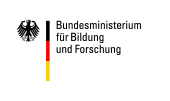Robot Operating Systems
This course gives an introduction to the Robot Operating System (ROS) including available tools that are commonly used in robotics. With the help of examples, the course provides a starting point for working with robots. The course covers how to create software including simulation, to interface sensors and actuators, and to integrate control algorithms.
The Description of the module you find here.
- ROS architecture: Master, nodes, topics, messages, services, parameters and actions.
- Console commands: Navigating and analyzing the ROS system and the catkin workspace.
- Creating ROS packages: Structure, launch-files, and best practices.
- Simulating with ROS: robot models (URDF) and simulation environments.
- Working with visualizations and user interface tools.
- Introduction to ROS2.
Students will understand the fundamental theoretical and algorithmic principles behind robotic systems. Students are able to solve robot specific learning problems involving, for example, navigation and mapping, grasping and manipulation, and interaction with humans. They understand the ROS Ecosystem (topics, nodes, messages, services, actionlib) and are able to develop simple applications to control robot motion.
The study program combines self-study and group work in a flexible online learning environment. Students have access to video lectures, a detailed and user-friendly script tailored for working professionals, as well as interactive quizzes and exercises. Regular tutorial sessions and online office hours with mentors support the learning process, while discussion forums facilitate exchange among students. For more detailed information, please refer to the module handbook.
Linear algebra and analysis, programming in Python or C++
Recommended requirements:
- Desktop computer or notebook, with a supported version of Microsoft Windows, Apple macOS or Linux
- Headset
- Current version of Mozilla Firefox, Google Chrome, Apple Safari or Microsoft Edge
- Access to the internet (e.g., via xDSL, Cable, LTE, 5G) with a minimum data rate of 3 Mbit/s for downstream and 384 kbit/s for upstream.
In case of questions regarding the technical requirements, please don't hesitate to contact us.
Regular participation in online seminars will help you solving exercises, which have to be loaded up to the learning management system after request of the mentor. Passing the exercises successfully is recommended for participation in the final oral examination at Ulm University. For further information, please have a look into the module description.
After finishing your exam successfully you will get a certificate and a supplement, which will list the contents of the module and the competencies you have acquired. The supplement confirms you the equivalent of 3 credit points (ECTS).
Lecturer

Prof. Dr. Birte Glimm
Chair of the Institute of Artificial Intelligence

Gefördert von:



